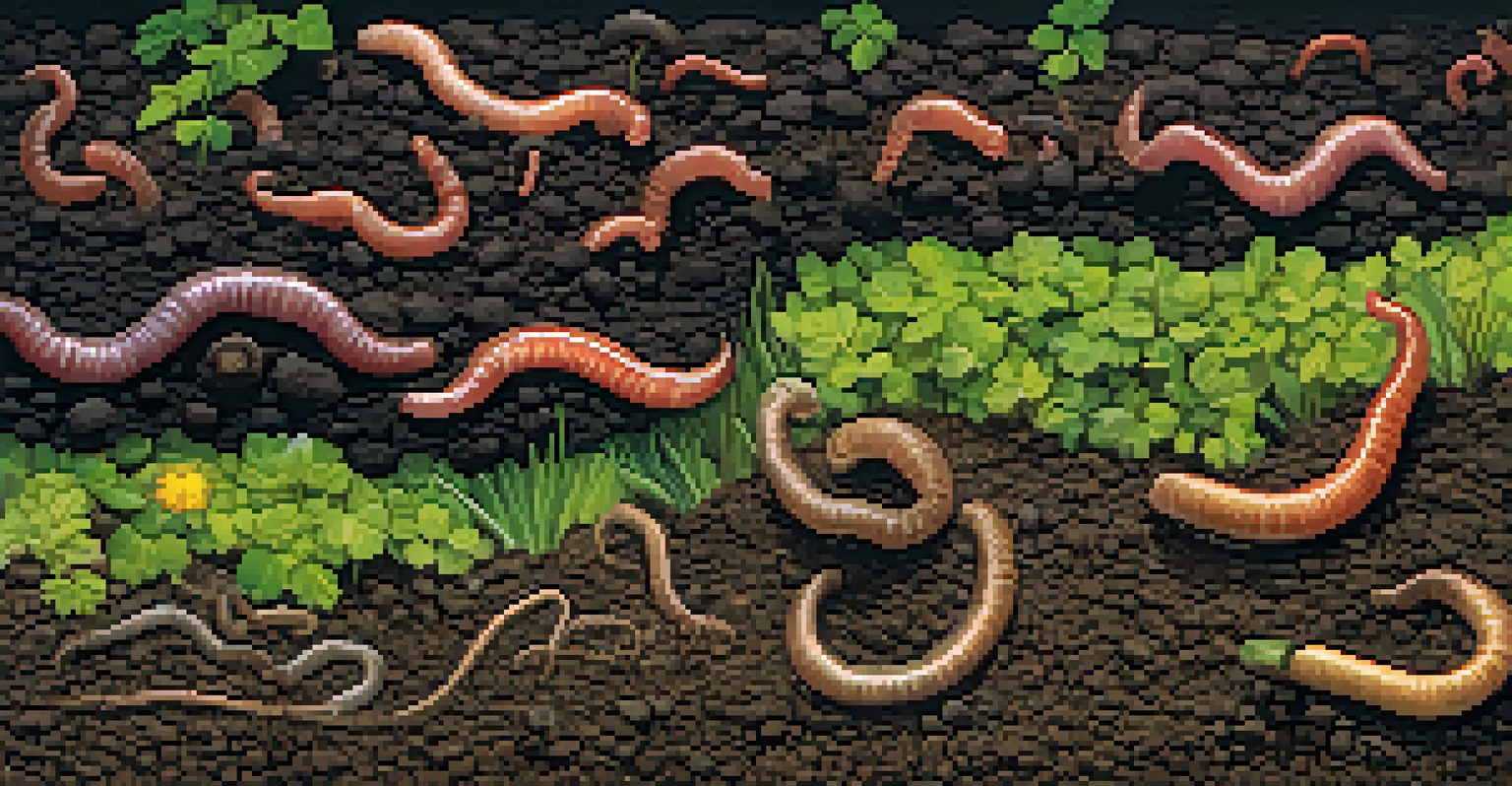Biodiversity: A Key Factor in Sustainable Agriculture

Understanding Biodiversity in Agriculture
Biodiversity refers to the variety of life forms in a given ecosystem. In agriculture, this includes the range of crops, livestock, and beneficial organisms that work together. High biodiversity not only supports food production but also encourages ecological balance, making farming systems more resilient.
Biodiversity is the foundation for ecosystem services that humanity relies on for food security, clean water, and health.
Imagine a vibrant garden filled with different flowers, each attracting various pollinators. This is akin to a biodiverse farm that supports various species, leading to healthier ecosystems. When farmers embrace this diversity, they cultivate a more stable environment that can withstand pests, diseases, and climate fluctuations.
Moreover, biodiversity is essential for soil health. Diverse root systems help aerate the soil, improve nutrient cycling, and prevent erosion, creating a more robust foundation for crops to thrive. In essence, understanding biodiversity is the first step towards sustainable agriculture.
The Role of Crop Diversity in Farming
Crop diversity involves planting different types of crops in a given area, which can significantly benefit farmers. By rotating crops and incorporating various species, farmers can reduce the risk of pests and diseases that thrive on single-crop systems. This practice not only enhances yield stability but also contributes to better soil health.

Consider a farmer growing a mix of legumes, grains, and vegetables. This diverse planting strategy not only attracts a range of pollinators but also enriches the soil with nitrogen from legumes. As a result, the overall productivity of the farm increases while reliance on chemical fertilizers decreases.
Biodiversity Boosts Farm Resilience
High biodiversity in agriculture enhances ecosystem stability, making farms more resilient to pests, diseases, and climate variations.
Additionally, crop diversity can enhance market resilience. By offering a variety of products, farmers can better adapt to market demands and fluctuations. This flexibility is crucial in a world where consumer preferences are ever-changing.
Enhancing Soil Health through Biodiversity
Soil health is paramount in sustainable agriculture, and biodiversity plays a pivotal role in maintaining it. A diverse array of soil organisms, including bacteria, fungi, and earthworms, work together to break down organic matter and recycle nutrients. This biological activity is essential for creating a fertile environment for crops.
The health of our ecosystems is directly linked to the health of our economies and societies.
For instance, cover crops like clover or rye can improve soil structure and fertility. These plants not only prevent erosion but also enhance microbial activity in the soil. As they decompose, they release nutrients that benefit subsequent crops, showcasing how biodiversity directly supports agricultural productivity.
Moreover, healthy soils are better at retaining water, reducing the need for irrigation. This is especially important as climate change leads to unpredictable weather patterns. Therefore, fostering soil biodiversity is not just beneficial; it's necessary for sustainable farming.
Pest Management and Biodiversity
Biodiversity can be a farmer's best ally in managing pests. Diverse ecosystems attract natural predators that help control pest populations, reducing the need for chemical pesticides. For example, ladybugs and lacewings are beneficial insects that feed on aphids, a common pest in many gardens and crops.
By promoting a range of habitats within and around farms, farmers can encourage these natural pest controllers. This might include planting flowering plants that provide nectar or creating diverse habitats like hedgerows. Such strategies not only support pest management but also enhance the overall health of the farm ecosystem.
Crop Variety Supports Soil Health
Planting diverse crops improves soil aeration, nutrient cycling, and overall fertility, crucial for sustainable farming.
Additionally, biodiversity can lead to the development of more resilient crops. By selecting and breeding diverse plants, farmers can create varieties that are better adapted to local conditions and less susceptible to pests. This approach not only fosters sustainability but also supports food security.
The Impact of Livestock Diversity
Livestock diversity is another crucial aspect of sustainable agriculture. Different breeds of animals can provide various benefits, from disease resistance to improved productivity. By keeping a mix of livestock, farmers can create a more balanced ecosystem on their farms.
For example, integrating chickens with crop production can provide natural pest control while their droppings enhance soil fertility. This symbiotic relationship highlights how diverse livestock can complement crop farming, creating a more efficient and sustainable system.
Moreover, maintaining diverse livestock breeds can help preserve genetic resources. This genetic diversity is vital for adapting to changing environmental conditions and disease pressures. By prioritizing livestock diversity, farmers not only enhance their sustainability but also contribute to global food security.
Climate Resilience and Biodiversity
Biodiversity plays a critical role in helping agriculture adapt to climate change. Diverse ecosystems are more resilient to extreme weather events, such as droughts and floods. By integrating a variety of crops and livestock, farmers can build systems that are better equipped to handle environmental stresses.
For instance, a farm that includes both drought-resistant crops and moisture-retaining cover crops can thrive even in dry conditions. This ability to adapt is essential as climate patterns continue to shift, affecting crop yields and food production worldwide.
Policies Promote Sustainable Practices
Supportive policies and education empower farmers to adopt biodiversity-friendly methods, fostering a more sustainable agricultural future.
Additionally, biodiversity contributes to carbon sequestration, which helps mitigate climate change. Healthy, diverse ecosystems can absorb more carbon dioxide from the atmosphere, making agriculture part of the solution to climate challenges. Embracing biodiversity is not just a strategy; it's a necessity for a sustainable agricultural future.
Policies Supporting Biodiversity in Agriculture
To truly harness the benefits of biodiversity, supportive policies are essential. Governments and organizations can encourage sustainable agricultural practices by providing incentives for farmers who adopt biodiversity-friendly methods. This could include grants for planting cover crops or subsidies for organic farming.
Moreover, education and resources are crucial for farmers to understand the value of biodiversity. Workshops, training programs, and access to research can empower farmers to implement sustainable practices effectively. When farmers are informed, they are more likely to embrace biodiversity as a key element of their operations.

Lastly, collaboration among farmers, policymakers, and researchers can strengthen the biodiversity agenda. By sharing knowledge and resources, stakeholders can create a more holistic approach to agriculture that prioritizes sustainability. Working together, we can cultivate a future where biodiversity thrives alongside productive farming.